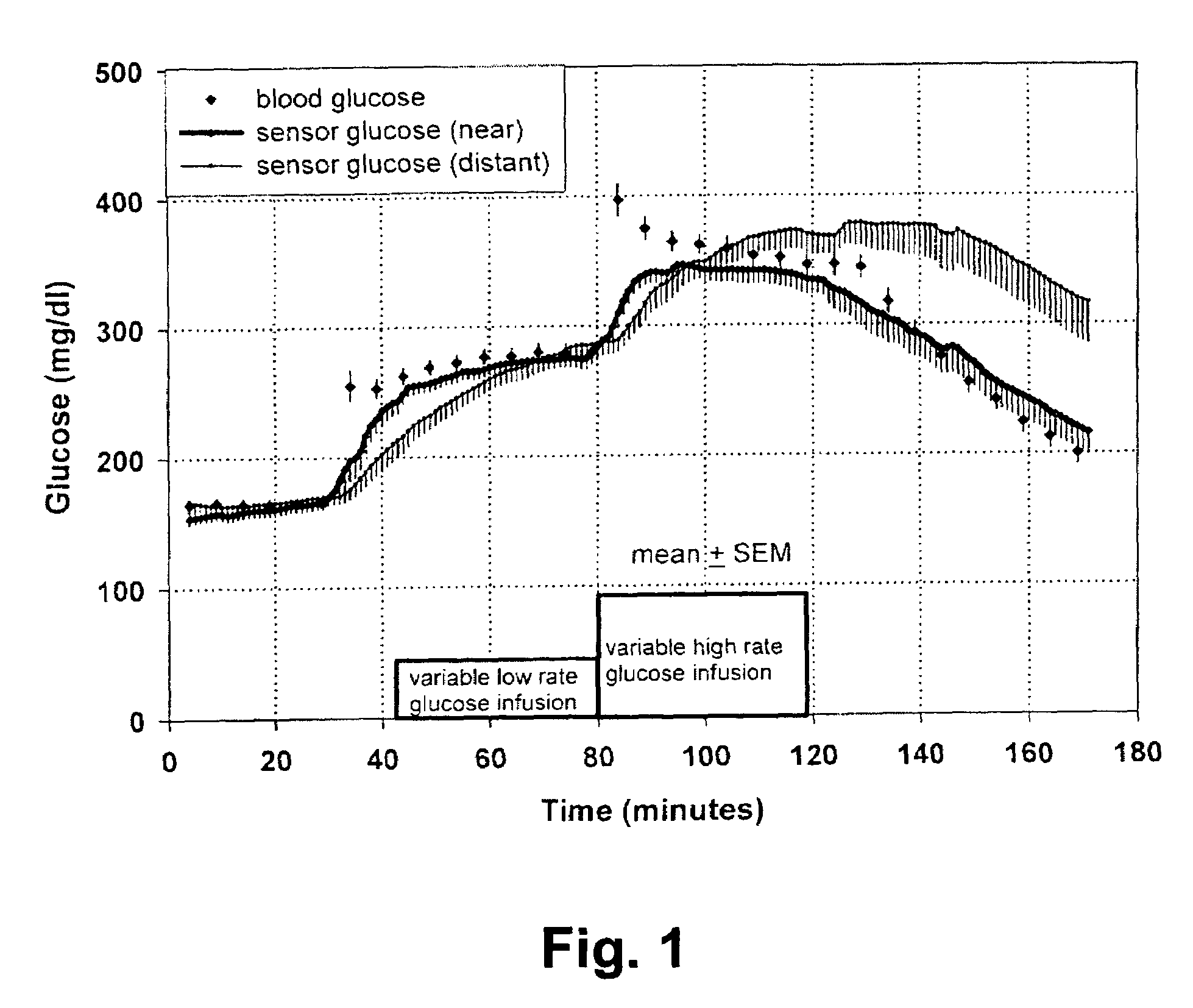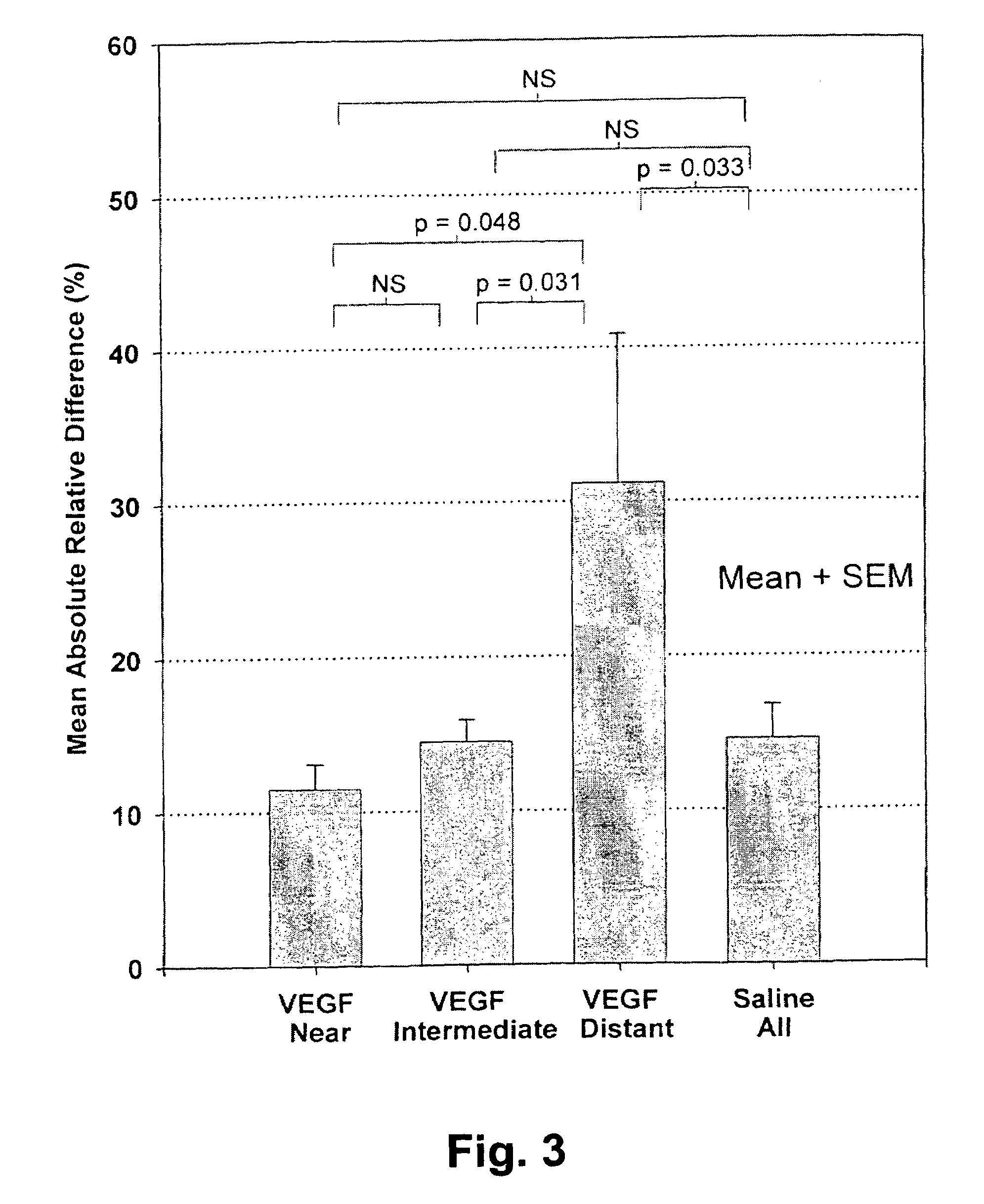Implantable biosensor
a biosensor and implantable technology, applied in the field of implantable biosensors, can solve the problems of patients not being able to sample their blood, the sampling process is uncomfortable and difficult, and the insulin dosing is dangerous
- Summary
- Abstract
- Description
- Claims
- Application Information
AI Technical Summary
Benefits of technology
Problems solved by technology
Method used
Image
Examples
Embodiment Construction
[0031]We have invented an implantable system for sensing analytes designed to accurately function for long periods of time. In addition to the primary use, this design could easily serve in a non-implanted application.
Other Uses of the Sensor System
[0032]With minor modifications, the following sensor design can detect analytes other than glucose. Covering the indicating (sensing) electrodes with other enzymes and slightly altering the polyurethane can make the sensor capable of measuring many other compounds. Examples of other analytes measured by the described sensor design include but are not limited to lactate, I-methionine, I-phenylalanine, d-aspartate, d-glutamate, urate, ethyl alcohol, methyl alcohol, cholesterol, ascorbic acid, and many others.
[0033]The described sensor design can also be used to measure concentrations in other fluids other than bodily fluids. Examples of other fluids include but are not limited to fruit and vegetable juices, wine, yogurt, and many others.
[00...
PUM
| Property | Measurement | Unit |
|---|---|---|
| pore size | aaaaa | aaaaa |
| pore size | aaaaa | aaaaa |
| pH | aaaaa | aaaaa |
Abstract
Description
Claims
Application Information
 Login to View More
Login to View More - R&D
- Intellectual Property
- Life Sciences
- Materials
- Tech Scout
- Unparalleled Data Quality
- Higher Quality Content
- 60% Fewer Hallucinations
Browse by: Latest US Patents, China's latest patents, Technical Efficacy Thesaurus, Application Domain, Technology Topic, Popular Technical Reports.
© 2025 PatSnap. All rights reserved.Legal|Privacy policy|Modern Slavery Act Transparency Statement|Sitemap|About US| Contact US: help@patsnap.com



